Collaboration Is A Growing Need!
- By Sharad Matade & Gaurav Nandi
- June 30, 2025
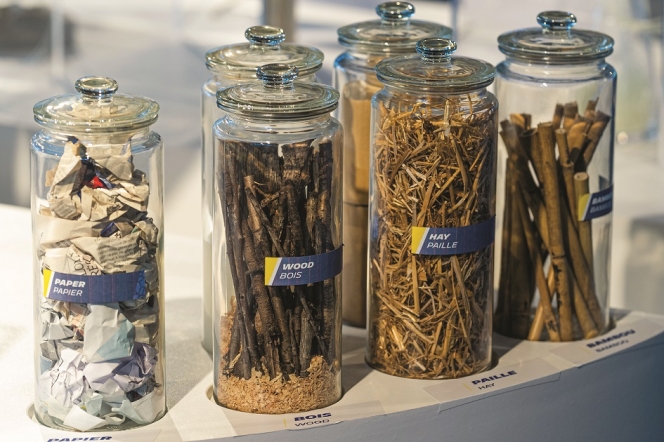
The tyre industry has undergone significant changes over the past century, particularly in material composition and performance optimisation. While the external appearance of tyres may remain similar, advancements in rolling resistance and the integration of sustainable materials have reshaped the sector. Michelin, alongside its competitors, has been embracing innovation through collaborations to meet its ambitious 2050 sustainability goals, focusing on using 100 percent renewable and recycled materials. However, the challenge lies in scaling up recycling technologies and ensuring effective sorting. As the industry shifts, RFID technology and extended producer responsibility (EPR) regulations are emerging as critical tools for achieving material circularity and enhancing recycling efficiency.
Tyres have changed in the last 100 years. While the basic shape and colour might look the same, the internal composition has evolved significantly. Over the past century, and especially in the last 30 years, there have been major advances. One of the most significant has been the improvement in rolling resistance. Achieving lower rolling resistance without compromising grip has been a major technical challenge, and it has had a direct impact on fuel efficiency. In parallel, there’s been increasing focus on using more sustainable materials in tyre manufacturing. So, while it might not be obvious from the outside, there’s been substantial innovation under the surface.
However, it is a well-known fact that the tyre industry is secretive. Companies keep their research and development as tight as possible, but endeavours for including recyclable materials seem to break that ceiling, prompting towards collaborations.
Speaking exclusively to Tyre Trends, Sander Vermeulen, Vice President for End-of-life Rubber Products Recycling Business at Michelin, said, “There is a growing need and momentum for tyre companies to work more closely together, particularly around sustainability and materials innovation. Many companies have set ambitious goals for 2050, which include using 100 percent sustainable materials, achieving full recyclability or becoming carbon neutral. While each company may define these goals differently, the overarching direction is very similar.”
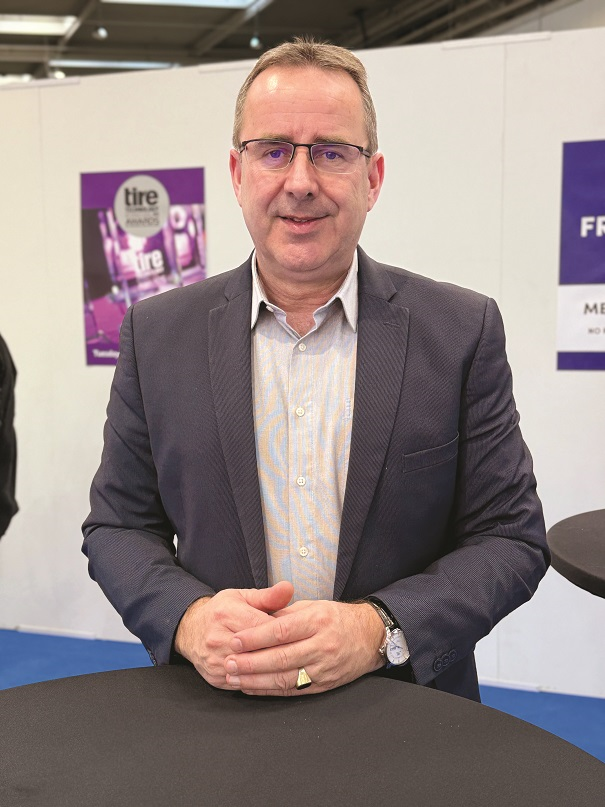 “A good example of this shift is our recent collaboration with Bridgestone through the ‘Call for Action’ initiative. We discovered that both companies shared similar long-term ambitions. One major challenge we identified was the scalability of innovations, especially from recycling companies. Many of these innovations work well at small scale, but scaling them up to meet the needs of the global tyre industry is a different story. What’s promising is that instead of working in silos, we began engaging in open dialogue. Both Michelin and Bridgestone were receiving proposals for new materials but often found them unsuitable for tyre applications. Rather than simply rejecting these proposals, we asked that how we can help these suppliers improve the products,” he added.
“A good example of this shift is our recent collaboration with Bridgestone through the ‘Call for Action’ initiative. We discovered that both companies shared similar long-term ambitions. One major challenge we identified was the scalability of innovations, especially from recycling companies. Many of these innovations work well at small scale, but scaling them up to meet the needs of the global tyre industry is a different story. What’s promising is that instead of working in silos, we began engaging in open dialogue. Both Michelin and Bridgestone were receiving proposals for new materials but often found them unsuitable for tyre applications. Rather than simply rejecting these proposals, we asked that how we can help these suppliers improve the products,” he added.
He noted that together the tyre makers started defining shared specifications that outline the minimum criteria a new material must meet to be viable for tyre manufacturing. “It’s not a guarantee of adoption, but it provides a clear, transparent benchmark. And if a material doesn’t fall within that box, we can save time for ourselves and the suppliers,” added Vermeulen.
He also quipped that he had never imagined working so openly with a competitor like Bridgestone whilst strictly respecting antitrust rules. But the experience has been incredibly constructive.
Michelin’s 2050 target is bold as it seeks to make 100 percent of its tyres from renewable, recycled or sustainable materials. Recycling sits at the core of that ambition. Internally, the company is aligning efforts across departments to meet this goal with a near-term milestone of 40 percent sustainable content by 2030.
That percentage includes both recycled and bio-based materials. However, Michelin isn’t developing recycling technologies in-house. Instead, it’s working with a network of external partners to identify and scale promising innovations.
Among its collaborators are Enviro and Infiniteria as well as broader initiatives like Biobutterfly and the WhiteCycle consortium, which focuses on recovering textile fibres for tyres. The company remains open to any solution that can help close the loop on tyre materials.
As of the most recent annual report, Michelin reported that 31 percent of the materials used in its tyres are either renewable or recycled. This figure reflects the combined share of both categories, not recycled content alone.
Opining on whether recycled materials are easier to use in commercial or passenger tyres, Vermeulen said, “It really depends on the specific application. Some applications allow for a higher percentage of renewable or recycled content than others. But we don’t break down our targets or current performance by tyre category. The current figure we’ve communicated in our annual report is a global average across all types of tyres.”
EVOLVING VALUE CHAIN
As tyre companies remain steadfast towards the respective goals of using recycled and renewable materials, a glaring question that remains is the fate of current suppliers. Explaining how the value chain will be impacted once tyre companies reach the goals, Vermeulen stated, “They will also need to adapt. The entire value chain must evolve. That means synthetic rubber producers and oil suppliers need to develop renewable or recycled versions of the materials they currently provide. Everyone, from upstream raw material providers to downstream manufacturers, will need to contribute if we’re going to meet these ambitious goals.”
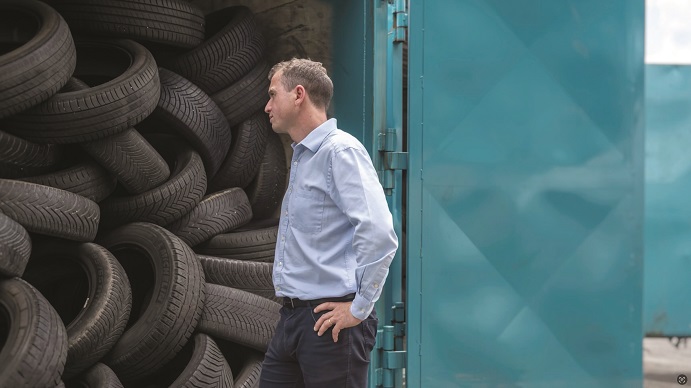
Commenting on whether such shift will restructure the entire tyre industry, he said, “It’s hard to make specific predictions, but one thing is clear that the entire value chain is already beginning to change. All raw material suppliers now understand the direction tyre manufacturers are heading. We’re already seeing many traditional suppliers exploring new approaches to reduce the reliance on fossil-based materials. Some are developing recycled alternatives, while others are exploring biobased feedstocks.”
“In this effort, a concept we explored in a large-scale European project was called BlackCycle. It brought together various actors from the entire tyre industry value chain including raw material suppliers and other stakeholders to map out how we can extract maximum value from end-of-life tyres. It looked at viable recycling pathways including how pyrolysis oil can be integrated into chemical supply chains. We all need to work together to co-create solutions based on renewable and recycled materials,” he added.
Michelin doesn’t plan to produce recycled materials itself. Instead, its focus is on defining performance and quality specifications, then partnering with companies ranging from start-ups to established suppliers that can deliver materials meeting those standards.
Commenting on the same lines, he added, “The entire tyre industry has a strong interest in gaining access to recycled materials that can be reused in new products. And to achieve that, partnerships are essential. There’s no way we can meet these ambitions if every company stays within its traditional boundaries and works in isolation. We believe in collaborating across the value chain. Often, smaller companies have breakthrough technologies or innovative ideas but lack the resources or infrastructure to scale. In those cases, if we can help them access funding or industrialise the processes, it’s a win-win for the industry as a whole.”
While performance gaps between recycled and virgin materials are a known concern, Michelin sees scalability as the more critical barrier. Many recycling innovations show promise at the lab or prototype level, but few are ready for industrial-scale production.
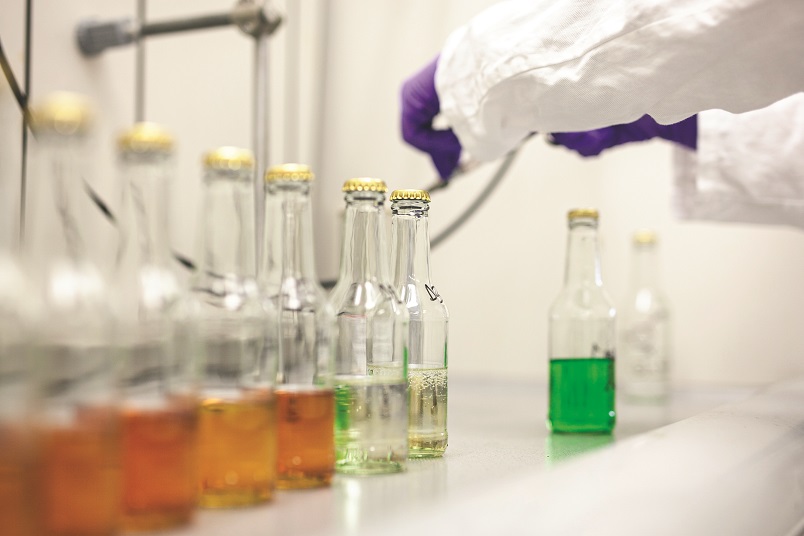
To bridge that gap, Michelin and others in the sector are working closely with innovators to help mature these technologies to meet industry demands.
REGULATION & TECHNOLOGY
The extended producer responsibility (EPR) has been a staunch advocate for recycling end-of-life tyres across countries. The regulation is not only limited to European markets but has expanding into countries like India too.
Commenting on whether EPR regulations will help drive more effective recycling, Vermeulen said, “Extended producer responsibility plays a key role in tyre recycling by making manufacturers responsible for collecting and recycling tyre after use. In countries with EPR laws, such as most of Europe, producers and importers must ensure proper tyre collection and recycling. This legally mandates tyre producers to manage the end-of-life stage of the products. However, EPR is not the only model that can ensure effective recycling. In regions without EPR, like the United States, tyre recycling is still managed through a free-market system driven by industry and service providers. Even in Germany, which lacks an EPR law, tyres are still collected and managed properly through industry-driven solutions.”
“While EPR can certainly help in places with limited infrastructure, the key to effective tyre recycling lies in how well the system is organised. Whether through EPR or free-market models, both can be effective as long as the collection and recycling infrastructure is well established,” he added.
Vermeulen also views RFID technology as a crucial enabler for achieving material circularity in the tyre industry. By embedding RFID tags, tyres can be tracked and identified with precise information about its composition, helping to streamline the recycling process. This technology allows for better sorting of tyres based on specific material make-up, which is critical for maximising the quality of recycled materials.
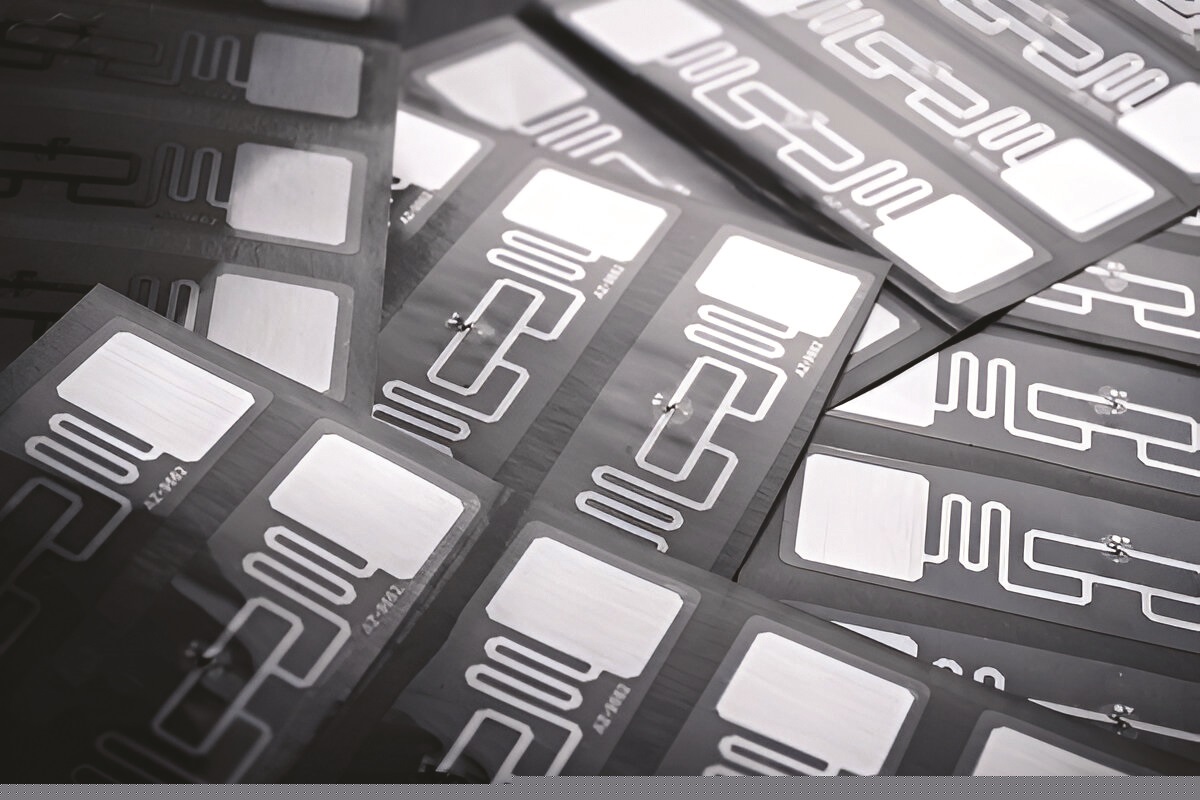
Just as with household recycling, the challenge is to ensure that materials are sorted effectively. With too many sorting categories, costs rise without guaranteeing better quality. RFID makes it easier to identify the correct ‘bin’ for each tyre, whether it’s a winter, truck or passenger car tyre.
Additionally, RFID can help differentiate between new, retreaded and partially worn tyres, which often have varying materials and recycling needs. This enables more efficient sorting, improving the overall quality of the recycling output while keeping costs manageable. Michelin sees RFID as an essential tool in making the recycling process more effective and economically viable.
- Global Platform For Sustainable Natural Rubber
- GPSNR
- Natural Rubber
- Sustainability
- Rubber Supply Chain
- Assurance System
- Circular Economy
- Responsible Sourcing
- Smallholders
- Supply Chain Transpa
GPSNR Marks Milestone At Seventh General Assembly
- By TT News
- December 17, 2025

Members of the Global Platform for Sustainable Natural Rubber gathered for the organisation’s seventh General Assembly, marking what it described as a pivotal year for accountability and member-led sustainability across the natural rubber value chain.
A key development in 2025 was the launch of GPSNR’s risk-based Assurance System, which sets sustainability expectations, introduces independent verification and aims to drive continuous improvement beyond regulatory compliance. The system was developed collaboratively over several years and is intended to provide a globally applicable framework for sustainability in the sector.
At the assembly, end-user companies reaffirmed their support for the Assurance System and agreed on a structured pathway towards full implementation within their category.
“This year marks a turning point for GPSNR,” said Stefano Savi, chief executive of GPSNR. “The Assurance System gives our members a shared and trusted foundation for demonstrating progress across the value chain.”
Members also reflected on the first year of the Shared Investment Mechanism, a model that allows manufacturers to share the costs of large-scale capacity-building projects. The initiative is intended to deliver long-term benefits for upstream participants, particularly smallholder producers.
“Sustainability cannot be achieved by one part of the value chain alone,” Savi said. “By investing together, our members are enabling more inclusive and impactful outcomes worldwide.”
Looking ahead to 2026, GPSNR said it would focus on supporting the implementation of the Assurance System through data collection, member learning programmes, and stakeholder dialogue, to ensure the framework reflects operational realities and different business models.
The assembly concluded with members reiterating their commitment to building more equitable, resilient and sustainable natural rubber supply chains.
- Tire Recycling Foundation
- Circle Of Change Awards
- Tyre Recycling
- End-Of-Life Tyres
- Circular Economy
- Sustainability
- Recycled Tyre Materials
- Tire Recycling Conference
- Value Chain Collaboration
- Innovation
Tire Recycling Foundation opens nominations for inaugural Circle of Change Awards
- By TT News
- December 16, 2025
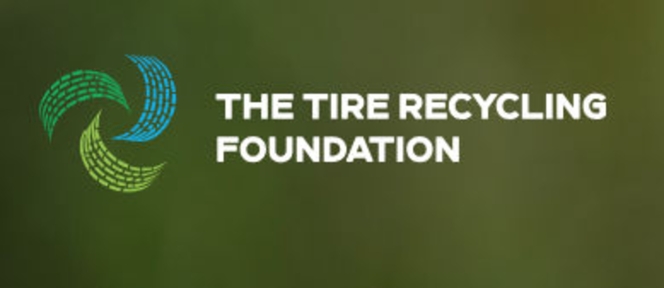
The Tire Recycling Foundation has opened nominations for its first Circle of Change Awards, aimed at recognising organisations, teams and individuals advancing innovation and sustainability across the tyre recycling sector.
Nominations opened on 15 December and will be accepted until 8 February 2026. The awards will honour contributions spanning tyre recycling technologies, end-use market development and leadership in circular economy practices.
“The Circle of Change Awards will serve as a powerful way to recognise national visionaries and changemakers who have shaped the trajectory of the full tyre recycling value chain over the past two decades,” said Anne Forristall Luke, president of the Tire Recycling Foundation board. “We are thrilled to recognise trailblazers making a lasting impact on end-of-life tyre (ELT) recycling and the circular economy.”
Four award categories will be presented at the 10th Tire Recycling Conference, scheduled to take place in Denver, Colorado.
“By spotlighting the collective progress being made in tyre recycling, the Foundation hopes these inaugural awards will inspire and fuel accelerating momentum in exciting new markets for recycled tyres,” said Stephanie Mull, executive director of the Tire Recycling Foundation.
The Innovation in End-Use Technology Award will recognise technologies, products or processes that use recycled tyre rubber in new ways, with a focus on technological advancement, commercialisation and sustainability impact.
The Circular Economy Trailblazer Recognition, State Leadership in Tire Market Innovation category will honour state agencies or statewide programmes that demonstrate leadership and measurable impact in advancing tyre recycling within a circular economy framework.
The Market Development Excellence Award will recognise efforts to expand end-use markets for tyre-derived materials through education, policy, marketing or advocacy, with an emphasis on measurable market growth and long-term strategy.
The Value Chain Collaboration Award will acknowledge partnerships across the tyre recycling value chain that deliver measurable improvements in efficiency, economics or environmental performance.
The foundation said organisations and individuals that have made significant contributions to tyre recycling or developed innovative solutions for tyre-derived materials are encouraged to apply. Award recipients will be allowed to showcase their achievements and inspire further progress across the sector.
- German Rubber Industry Association
- German Rubber Industry
- wdk
- Rubber Industry
- Tyre Recycling
- End-Of-Life Tyres
wdk Calls For Risk-Based Approach To Unlock Tyre Recycling Potential
- By TT News
- December 15, 2025
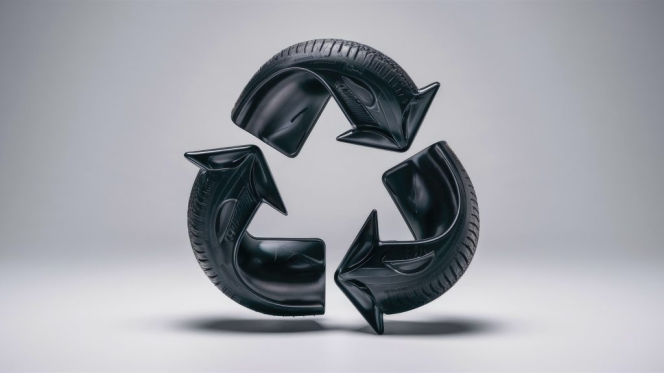
The German Rubber Industry Association (wdk) has called for enhanced policies to unlock the full potential of tyre recycling in Germany. While acknowledging the existing successes of the circular economy in this sector, Stephan Rau, Technical Director of wdk, emphasised that significant untapped opportunities remain. Last year alone, Germany generated 533,000 tonnes of used tyres, with nearly 70 percent kept in circulation through reuse, retreading and recycling. The wdk advocates for a stronger framework to improve these material flows and boost the market for recycled materials.
A central pillar of the wdk’s position is the demand for a modern, science-based evaluation of recycled rubber products. Over 200,000 tonnes of used tyres are processed annually into granules and rubber flour, vital secondary raw materials for sustainable manufacturing. However, Rau argues that their broader market success is hindered by outdated assessment methods. The association urgently recommends a risk-based approach that evaluates chemical ingredients based on their actual bioavailability and migration, rather than their mere presence. This perspective, now supported by the German Federal Institute for Risk Assessment (BfR), necessitates establishing binding limit values determined through migration analysis to ensure both safety and commercial viability.
Furthermore, the wdk highlights a critical gap in the complete monitoring of tyre material flows. A notable proportion of used tyres exit Germany and Europe for processing, depriving domestic recyclers of valuable secondary raw materials. To address this leakage and strengthen the circular economy, Rau stresses the need for comprehensive tracking of all end-of-life tyres. The association’s commitment is reflected in its patronage of the Alliance for Future Tyres (AZuR), a European network of nearly 100 partners from industry, trade and science dedicated to advancing a sustainable tyre circular economy across all segments.
- Hi-Green Carbon
- ISCC EU Certification
- Sustainability
- Supply Chain Integrity
- Recovered Carbon Black
- Tyre Pyrolysis Oil
Hi-Green Carbon Secures ISCC EU Certification
- By TT News
- December 13, 2025
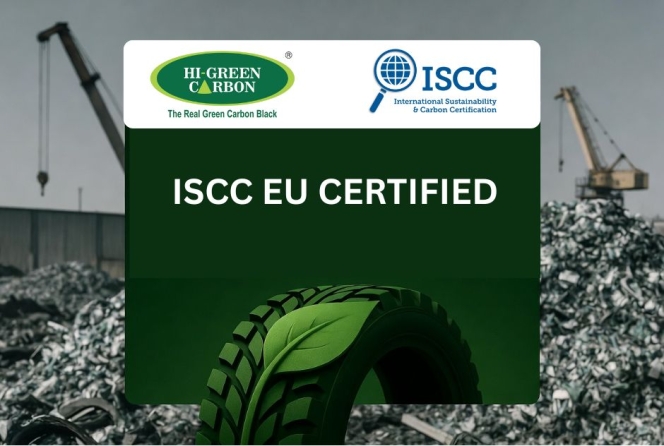
Hi-Green Carbon Limited has achieved a significant milestone in its sustainability operations by securing the prestigious ISCC EU Certification. This globally recognised endorsement highlights the company's adherence to rigorous international standards for environmental responsibility and supply chain integrity.
The certification verifies full compliance across the entire production process, from sourcing to delivery, emphasising traceability and operational transparency. It specifically validates the sustainable production of the company's key outputs, including recovered carbon black (rCB) and tyre pyrolysis oil (TPO). This accomplishment underscores Hi-Green Carbon’s commitment to circular economy principles and positions it as a leader in the production of sustainable industrial materials.
The company statement read: “This milestone not only strengthens our sustainability commitment but also deepens our collaboration with you, our valued clients and partners. With ISCC-certified products, you can have greater confidence in the environmental integrity and long-term sustainability of your supply chain, supporting your own green initiatives and carbon-reduction goals. We extend our sincere gratitude to our clients, partners, and team members for their consistent support and trust. Together, we are driving positive change and contributing to a cleaner, greener, and more circular future.”







Comments (0)
ADD COMMENT